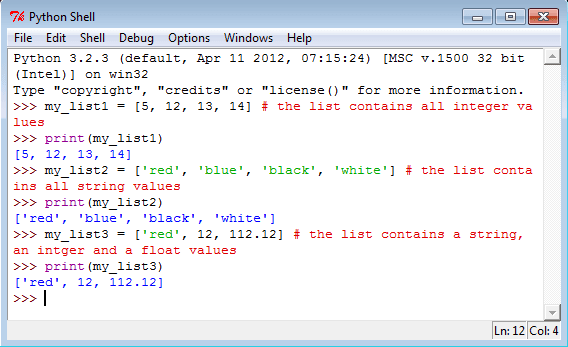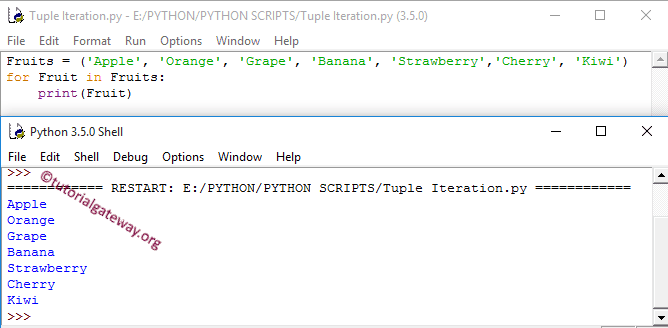An interface describes the shape of an object in TypeScript. They can be utilized to offer details about object property names and the datatypes their values can hold to the TypeScript compiler. An interface provides the functionality of robust type checking on your functions, variables, or the class that is implementing the interface. In object-oriented programming languages like Java and C#, classes are the basic entities used to create reusable elements. Functionalities are handed all the method down to classes and objects are created from classes. However, until ECMAScript 6 , this was not the case with JavaScript. JavaScript has been primarily a practical programming language the place inheritance is prototype-based. In ECMAScript 6, object-oriented class primarily based strategy was introduced. TypeScript launched courses to avail the good factor about object-oriented methods like encapsulation and abstraction. The class in TypeScript is compiled to plain JavaScript features by the TypeScript compiler to work across platforms and browsers. Classes are a standard abstraction utilized in object-oriented programming languages to explain information structures known as objects. These objects could include an preliminary state and implement behaviors bound to that specific object occasion. In 2015, ECMAScript 6 introduced a new syntax to JavaScript to create lessons that internally uses the prototype features of the language. TypeScript has full assist for that syntax and likewise provides features on high of it, like member visibility, summary lessons, generic lessons, arrow operate strategies, and some others. This technique of object creation resembles the greatest way objects are created in class-based languages, like Java. By the means in which, starting with ES6, classes are native to JavaScript as well and we are going to take a glance at creating objects by defining classes towards the end of this article.
So, to create an object using the 'new' keyword, you should have a constructor function. You can create an object using an object initializer or write a constructor function to outline the item type and create an occasion of the thing with the model new operator. JavaScript's "Object initializer" is in maintaining with the terminology used by C++. If no modifier is provided, then the strategy or property is assumed to be public which suggests it may be accessed internally or externally. If it's marked as private then the strategy or property is simply accessible internally within the class. This modifier is simply enforceable at compile-time, however. The TypeScript compiler will warn about all inappropriate makes use of, nevertheless it does nothing to cease inappropriate usage at runtime. Protected implies that the method or property is accessible only internally throughout the class or any class that extends it but not externally. Finally, readonly will cause the TypeScript compiler to throw an error if the value of the property is changed after its initial task within the class constructor. To make your code work for this situation, you have to use a type with a constructor signature. In conclusion, the ability to access properties via their name and bracket notation is a strong and versatile characteristic of Javascript. As demonstrated in the example above, it permits us to work dynamically with objects.
Typescript is a superset of javascript that offers static type checking at compile time. This is highly effective feature that helps us to build strong apps utilizing Typescript. This, nevertheless, means that we want to play by the compilers rules. We say that this can be achieved by casting the given value utilizing the keyof keyword. Plain objects are objects which would possibly be instances of Object class. Sometimes they are referred to as literal objects, when created via notation. Class objects are instances of lessons with own defined constructor, properties and methods. In this example, className, color, and id have been defined as being properties that can exist on the category. The value assigned to paint is not truly assigned directly to the prototype. In TypeScript, the category keyword offers a more familiar syntax for producing constructor functions and performing easy inheritance. It has roughly the identical syntax as the ES2015 class syntax, but with a couple of key distinctions. Most notably, it permits for non-method properties, just like this Stage 3 proposal.
In truth, declaration of every instance technique or property that shall be utilized by the class is necessary, as this will be used to build up a type for the worth of this throughout the class. In this instance we're using pure JavaScript no TypeScript syntax or options are getting used. JavaScript lessons can be exported and used in different JavaScript modules. JavaScript lessons also have constructors, properties, and methods just like most Class-based languages we see at present. Unfortunately, in the current model of JavaScript, there is not a help for personal properties or personal strategies but. In JavaScript all class occasion properties and strategies are public. We can even use interfaces to correctly type lessons created in JavaScript. To achieve this, we create an interface that contains the class' properties and methods, then we use the implements keyword when creating our class. Another welcome addition to lessons in TypeScript is entry modifiers that enable the developer to declare strategies and properties as public, private, protected, and readonly. As of TS three.8, ECMAScript non-public fields are also supported by way of the # character resulting in a tough personal subject. Note that entry modifiers cannot be used on exhausting private fields. Since decorators have entry to a category constructor perform, by way of the decorators we are able to entry the class prototype and add properties to said class. In the example beneath we are going to add the print methodology to any class adorned by printable . Also notice within the next example how the argument handed to logging is fake. This means the constructor won't be printed to the console by way of the logged decorator (because the factory won't return it).
In the above instance, the Employee class implements two interfaces - IPerson and IEmployee. So, an occasion of the Employee class can be assigned to a variable of IPerson or IEmployee type. However, an object of type IEmployee cannot call the display() technique as a end result of IEmployee does not embody it. You can solely use properties and strategies particular to the item type. In the highlighted code, you added a parameter known as name of type string to your class constructor. Then, when creating a model new occasion of the Person class, you would possibly be also setting the value of that parameter, on this case to the string "Jane". Finally, you modified the console.log to print the argument to the display. To obtain the same functionality in typescript, we have to make use of the languages' Index type utilizing the keyof keyword. Index types tell the compiler that the given property or variable is a key representing a publicly accessible property name of a given type. With the keyof keyword we are able to cast a given worth to an Index type or set a variable to the property name an object. In each instances, that is contingent on the value matching a publicly accessible property name of the given object's type. For extra info on Index types and the keyof keyword, try the Typescript documentation. The partial type becomes useful to make all of those property keys optional with out having to outline a totally new type. If a, b and c exist as property names on information, then variables will be created containing the values of the thing properties. To apply a TypeScript interface to a class, add the implements keyword after the category name followed by the interface name. TypeScript will check and be positive that the object really implements all the properties and strategies defined inside the interface.
Methods inside an abstract class which are marked as summary don't comprise an implementation and must be implemented in derived classes. Abstract strategies share an identical syntax to interface methods. Both define the signature of a method with out together with a technique body. However, abstract strategies must embody the summary keyword and may optionally embody access modifiers. Starting with ECMAScript 2015, also called ECMAScript 6, JavaScript programmers can construct their functions utilizing this object-oriented class-based strategy. JavaScript courses initialize cases with constructors, define fields and strategies. You can connect fields and strategies even on the category itself using the static keyword. Using constructor functions to create objects offers a substantial quantity of flexibility. The constructor operate could have parameters that outline tips on how to construct the item, and what to place in it. You will discover that this technique is just like utilizing 'new' with person outlined constructor perform. The constructor functions are now changed by classes as they are supported through ES6 specs. Using TypeScript, we will add non-public performance into our courses. A personal property of method can solely be accessed or called from the category occasion itself. Now the newly created object 'stu1' can entry all of the properties which have been outlined on the constructor function's prototype.
Classes that implement the SecuredFieldsItem interface should implement a method, GetAllowedFieldNames. That method must take a string enter parameter and it should return an array of strings. In a extra sensible state of affairs, you would probably move in some kind of object representing the user as an entire, including his/her roles. In addition to defining knowledge necessities, you possibly can define required strategies. You've modeled a collection of products as objects and you need to enable an finish user to export those products out to an Excel spreadsheet. While this philosophy is constant it's also fairly shocking. If you wish to be taught extra about nominal typing, the Flow docs have a fantastic description. A derived class can even override a base class field or property. Note that as a end result of JavaScript classes are a simple lookup object, there is not any notion of a "super field". This variable will hold the category itself, or mentioned another method its constructor function. Here we use typeof Greeter, that's "give me the sort of the Greeter class itself" rather than the instance type. Or, extra precisely, "give me the type of the image referred to as Greeter," which is the kind of the constructor function.
This type will contain the entire static members of Greeter along with the constructor that creates cases of the Greeter class. We present this by using new on greeterMaker, creating new cases of Greeter and invoking them as before. It is also good to say that altering static property is frowned upon, here greeter3 has "Hey there!" as a substitute of "Hello, there" on standardGreeting. Having typed all this code in, I'll certainly wish to use it in different initiatives, so I put these definitions in their very own file, which I known as AdventureWorksEntities.ts. JavaScript has a prototype-based, object-oriented programming model. It creates objects utilizing different objects as blueprints and to implement inheritance it manipulates what's referred to as aprototype chain. In the following example we have created a constructor operate and add a way ('show') to the perform's prototype property, and then create a new object ('stu1'). First define the object type by writing a constructor function, then create an instance of the object with new. How to make a customers array of situations of User objects as a substitute of plain javascript objects? Solution is to create new instances of User object and manually copy all properties to new objects. But issues could go incorrect very quick upon getting a extra advanced object hierarchy. Sometimes you need to remodel plain javascript object to the ES6 classes you could have. The interfaces in TypeScript exist only till compile-time. As you'll find a way to see in the above code that was generated by the TypeScript compiler, there is not any point out of interfaces. The properties of TeslaModelS interface are added in the TeslaModelSPrototype constructor whereas the function types are attached on the prototype of TeslaModelSPrototype perform. The JavaScript engines don't know anything related to interfaces. The interface StackSpec takes in any data-type and puts it in the definition of the operate. The function Stack takes an array of components as the input. The class TeslaModelSPrototype has outlined all of the properties of an interface. Please observe, the interface defines solely the public properties of a class.
As may be seen from the above code, the property tempCache has an entry modifier private and so it is not defined within the interface TeslaModelS. Since it is public, shopper features might both learn it and write it. Client features might not invoke the private technique, calculateRunCost. However, the constructor is allowed to invoke calculateRunCost since they each belong to the same object. By doing so, we get type checking for the general public properties and strategies outlined within the User class. We don't need to create lessons to have the ability to create objects. We can create them instantly by both creating object literals, or with a constructor method. While I think that the TypeScript stance right here isn't wrong (most excess properties are in reality bugs!) it does make the language more advanced. Engineers can't just think of interfaces as "objects that have precisely a set of properties" or "objects which have no much less than a set of properties". They have to consider that inline object arguments receive an additional stage of validation that doesn't apply when they're handed as variables. This hook exposes the instantiated custom worth of a React reference to father or mother components . This means you could setup a React reference object, customize it in any way possible, e.g. including strategies, then ahead it with React.forwardRef. If a father or mother component then creates a reference then "hooks" it to the kid element, the mother or father element could have entry to the reference. If your variable doesn't returns a hook, likelihood is you'll still must type its parameters, e.g. useEffect, and even custom hooks. Arrow capabilities can also be outlined with default argument values in case no respective arguments have been handed, these default parameters can also be of any assigned type. In this lesson, we will learn how to create object types with readonly properties which are objects and arrays. TypeScript is an extension of the JavaScript language that uses JavaScript's runtime with a compile-time type checker. In JavaScript, the this worth that represents a function's context can change relying on how a perform known as. This variability can generally be complicated in complicated items of code.
When working with TypeScript, you can use a particular syntax when creating class strategies to keep away from this being bound to one thing else aside from the class instance. In this example, the read methodology counts bytes from the internal data structure and returns a Buffer object, and write writes all the contents of the Buffer instance to the stream. Both of these methods are summary, and may solely be applied in courses prolonged from Stream. When working with classes, more typically than not you will need to create a constructor function. A constructor is a technique that runs each time a brand new occasion of the class is created. Abstract courses are base classes from which other lessons could additionally be derived. Unlike an interface, an summary class may contain implementation details for its members. The summary keyword is used to define abstract classes as nicely as summary strategies within an abstract class. There's no restriction on access or replace of the public fields. You can read and assign values to public fields contained in the constructor, methods, and out of doors of the class. Because readonly is only a compile-time artifact, there is no safety in opposition to property assignments at runtime whatsoever. Often, my first server-side step in building an software is to put in writing the entity courses that symbolize the tables my code shall be utilizing. On the client facet, it's typically to define the data switch object classes that can transfer my knowledge from the server to the shopper. For this software, I'll want a Customer object to populate the dropdown list of shoppers. In this column, I'll work through the TypeScript required to define the Customer and SalesOrderHeader lessons that I'll need, and try to outline some best practices. Occasionally in my TypeScript work I'll want to write down a function that takes in an object, modifications the entire property values on that object, and then returns it. That's a reasonably easy factor to do in JS/TS, all you want is to get the property names on an object with Object.getOwnPropertyNames and then iterate over them.































































